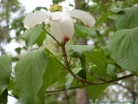







Missouri
The Show-Me State, 'Let the welfare of the
people be the supreme law'
people be the supreme law'

We are part of the Hubpages community.
Click here for more info.
Click here for more info.
-Color denotes a tree that is rare or endangered

Want to add your tree to our picture gallery? Click here for details!
Native Trees of Missouri

- Trees
- A-Z scientific
- A-Z by Common Name
- Families
- Aceraceae Maple Family
- Anacardiaceae Sumac Family
- Annonaceae Custard Apple Family
- Aquifoliaceae Holly Family
- Arecaceae, Palm Family
- Betulaceae Birch family
- Bignoniaceae Trumpet Creeper Family
- Burseraceae Frankincense Family
- Caprifoliaceae Honeysuckle Family
- Chrysobalanaceae Coco-plum Family
- Cornaceae Dogwood Family
- Cupressaceae Cypress Family
- Cyrillaceae Cyrilla Family
- Ebenaceae Ebony Family
- Ericaceae Heath Family
- Fabaceae Pea Family
- Fagaceae Beech Family
- Hamamelidaceae Witch Hazel Ffamily
- Hippocastanaceae Horse Chestnut Family
- Juglandaceae Walnut Family
- Lauraceae Laurel Family
- Leitneriaceae Corkwood Family
- Magnoliaceae Magnolia Family
- Meliaceae Mahogany Family
- Moraceae Mulberry Family
- Myricaceae Bayberry Family
- Myrsinaceae Myrsine Family
- Myrtaceae Myrtle Family
- Nyctaginaceae Four Oclock Family
- Olacaceae Olax Family
- Oleaceae Olive Family
- Pinaceae Pine Family
- Platanaceae Plane Tree Family
- Polygonaceae Buckwheat Family
- Rhamnaceae Buckthorn Family
- Rosaceae Rose Family
- Rubiaceae Madder Family
- Rutaceae Rue Family
- Salicaceae Willow Family
- Sapindaceae Soapberry Family
- Sapotaceae Sapodilla Family
- Simaroubaceae Quassia Family
- Styracaceae Storax Family
- Symplocaceae Sweetleaf Family
- Theaceae Tea Family
- Tiliaceae Lindon Family
- Ulmaceae Elm Family
- Taxaceae Yew Family
- Yucca Family
- Browse by State
- Rare or Endangered Species
- Trees_with_Special_Uses
- Tallest and Biggest
- Noxious Weeds
- Causes
- About Us
- Our Stores


™


Custom Search
Tree lists:
•A-Z by scientific
name
•A-Z by common
name
•By Family
For state A-Z list click state name below.
•A-Z by scientific
name
•A-Z by common
name
•By Family
For state A-Z list click state name below.
Home>Browse by State>Missouri
While meandering some of the 1,000 miles of trails throughout the recently named "best Trail State", you will probably see some of the hundreds of thousands of trees planted by the state. The forests of Missouri helped build the west and fueled the explosive growth of the region in the late 1800's to early 1900's. By the 1910's almost all the pine trees had been cut and the boom was over. Missouri has made great strides in replanting the once depleted forests and actually is ranked 7th out of the 20 northeastern states in forested land area. In addition to planted pine trees, within the 14 million
acres of forested land, about 4 out of 5 trees are either oak or hickory. The rolling hills of northern Missouri are home to some of the state's largest woodland areas. Once covered with grassland and savanna, remnants of pre-colonial ecosystems can still be found in places like Thousand Hills State Park.
In addition to the 90 state parks and historic sites, Mark Twain National Forest encompasses 1.5 million acres of the Ozark Highlands. There are also several well known trails that make exploring the forests of Missouri easier. The Lewis and Clark, Trail of Tears, Santa Fe National Historic, and the Katy Trail are some of the most famous and often traversed.
A noteworthy tree, the walnut tree is of ecological and economical importance in the state. As such, the Department of Conservation is monitoring for a disease called thousand canker disease, which is present in neighboring states. Others concerns within the state are the emerald ash borer, pine shoot beetles, and oak wilt. The emerald ash borer, in particular, poses a serious threat to Missouri's ash population. This imported insect has killed hundreds of thousands of ash trees as it makes it's way west. You can help prevent the spread of invasive insects by not transporting firewood and reporting any you find to your local extension center.
In addition to the 90 state parks and historic sites, Mark Twain National Forest encompasses 1.5 million acres of the Ozark Highlands. There are also several well known trails that make exploring the forests of Missouri easier. The Lewis and Clark, Trail of Tears, Santa Fe National Historic, and the Katy Trail are some of the most famous and often traversed.
A noteworthy tree, the walnut tree is of ecological and economical importance in the state. As such, the Department of Conservation is monitoring for a disease called thousand canker disease, which is present in neighboring states. Others concerns within the state are the emerald ash borer, pine shoot beetles, and oak wilt. The emerald ash borer, in particular, poses a serious threat to Missouri's ash population. This imported insect has killed hundreds of thousands of ash trees as it makes it's way west. You can help prevent the spread of invasive insects by not transporting firewood and reporting any you find to your local extension center.

State Tree: Flowering Dogwood
Missouri Native Tree Facts
Forested acres: 14 million
Percent of total area forested: 53%
Predominant Forest Type(s): Oak-Hickory
Number of National Forests: 1
Number of State Parks: 90
Number of Tree city USA communities: 81
Number of invasive tree species: 3 (see state list for noxious/invasive plants)
Insects of Concern: Emerald Ash Borer, Pine Shoot Beetle
Pathogens of Concern: Thousand Canker Disease, Oak Wilt
Number or Rare, Threatened or Endangered Species: 2
Number of tree families in our collection: 31
Sources:
Arborday.org
US Forest Service
Missouri Department of Conservation
United States Department Of Agriculture, Natural Resources Conservation Services: PLANTS Database
Additional state resources:
Missouri State Parks
University of Missouri Extension Service
Percent of total area forested: 53%
Predominant Forest Type(s): Oak-Hickory
Number of National Forests: 1
Number of State Parks: 90
Number of Tree city USA communities: 81
Number of invasive tree species: 3 (see state list for noxious/invasive plants)
Insects of Concern: Emerald Ash Borer, Pine Shoot Beetle
Pathogens of Concern: Thousand Canker Disease, Oak Wilt
Number or Rare, Threatened or Endangered Species: 2
Number of tree families in our collection: 31
Sources:
Arborday.org
US Forest Service
Missouri Department of Conservation
United States Department Of Agriculture, Natural Resources Conservation Services: PLANTS Database
Additional state resources:
Missouri State Parks
University of Missouri Extension Service
Missouri Native Tree Families and Genera
Useful information while browsing species:
• How to read a botanical name
• How to use our species boxes:
• How to read a botanical name
• How to use our species boxes:
Additional Resources:
North American Native Tree Families
North American A to Z List by Scientific Name
North American A to Z List by Common Name
North American Native Tree Families
North American A to Z List by Scientific Name
North American A to Z List by Common Name
click to enlarge.
-Color denotes a tree that is rare or endangered

Please note: This is not a complete list of all native tree families and species found in Missouri. We are constantly working towards a more comprehensive list and will add families and their species as completed.
Follow the links to view species native to Missouri. If the genus is not linked, species are listed on the family page.
Aceraceae, Maple
Anacardiaceae, Sumac
Rhus, Sumac
Toxicodendron, Poison Sumac
Annonaceae, Custard-Apple
Aquifoliaceae, Holly
Ilex, Holly
Betulaceae, Birch
Betula, Birch
Carpinus, Hornbeam
Corylus, Hazelnut
Ostrya, Hophornbeam
Bignoniaceae, Trumpet Creeper
Caprifoliaceae, Honeysuckle
Cornaceae, Dogwood
Cornus, Dogwood
Nyssa, Tupelo
Cupressaceae- Cypress
Juniperus, Juniper
Taxodium, Baldcypress
Aceraceae, Maple
Anacardiaceae, Sumac
Rhus, Sumac
Toxicodendron, Poison Sumac
Annonaceae, Custard-Apple
Aquifoliaceae, Holly
Ilex, Holly
Betulaceae, Birch
Betula, Birch
Carpinus, Hornbeam
Corylus, Hazelnut
Ostrya, Hophornbeam
Bignoniaceae, Trumpet Creeper
Caprifoliaceae, Honeysuckle
Cornaceae, Dogwood
Cornus, Dogwood
Nyssa, Tupelo
Cupressaceae- Cypress
Juniperus, Juniper
Taxodium, Baldcypress
Ebenaceae, Ebony
Diospyros, Persimmon
Fabaceae, Pea
Gleditsia, Locust
Fagaceae, Beech
Quercus, Oak
Hamamelidaceae, Witch-hazel
Hippocastanaceae, Horse-chestnut
Juglandaceae, Walnut
Carya, Hickory
Juglans, Walnut
Lauraceae, Laurel
Leitneriaceae, Corkwood
Magnoliaceae, Magnolia
Moraceae, Mulberry
Morus, Mulberry
Oleaceae, Olive
Fraxinus, Ash
Pinaceae, Pinus
Pinus, Pine
Diospyros, Persimmon
Fabaceae, Pea
Gleditsia, Locust
Fagaceae, Beech
Quercus, Oak
Hamamelidaceae, Witch-hazel
Hippocastanaceae, Horse-chestnut
Juglandaceae, Walnut
Carya, Hickory
Juglans, Walnut
Lauraceae, Laurel
Leitneriaceae, Corkwood
Magnoliaceae, Magnolia
Moraceae, Mulberry
Morus, Mulberry
Oleaceae, Olive
Fraxinus, Ash
Pinaceae, Pinus
Pinus, Pine
Platanaceae, Plane-tree
Platanus, Sycamore
Rhamnaceae, Buckthorn
Rosaceae, Rose
Crataegus, Hawthorn
Rubiaceae, Madder
Rutaceae, Rue
Salicaceae, Willow
Populus, Cottonwood
Salix, Willow
Sapindaceae, Soapberry
Sapotaceae, Sapodilla
Tiliaceae, Lindon
Tilia, Basswood
Ulmaceae, Elm
Celtis, Hackberry
Ulmus, Elm
Platanus, Sycamore
Rhamnaceae, Buckthorn
Rosaceae, Rose
Crataegus, Hawthorn
Rubiaceae, Madder
Rutaceae, Rue
Salicaceae, Willow
Populus, Cottonwood
Salix, Willow
Sapindaceae, Soapberry
Sapotaceae, Sapodilla
Tiliaceae, Lindon
Tilia, Basswood
Ulmaceae, Elm
Celtis, Hackberry
Ulmus, Elm
Missouri Endangered or Threatened Tree Species
Native plant species of concern are those either currently in the
state, or have historically been in the state but not seen for at
least 25 years.
Looking for a nursery near you?
Check out our nursery listing by county below!
Sorry, we do not currently have any tree nursery listings for this state. We do update these lists, so please check back.
Check out our nursery listing by county below!
Sorry, we do not currently have any tree nursery listings for this state. We do update these lists, so please check back.


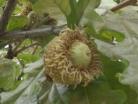
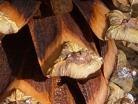
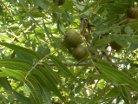
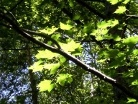

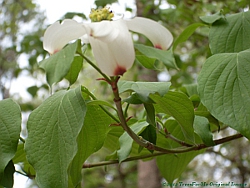
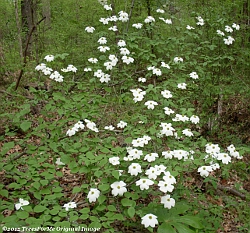
Named the state tree on June 20, 1955, Cornus floridana is perhaps the most well known of all the dogwood species. It is also the state tree of North Carolina,
Flowering dogwood on the Texas-Louisiana
border in March.
Cornus floridana ©2012 TreesForMe Original Image.
See usage requirements.
Sprawling shrubby form of a forest flowering
dogwood.
Cornus floridana ©2012 TreesForMe Original Image.
See usage requirements.
Virginia (also state flower), and West Virginia. Often planted as an ornamental landscapetree, it is prized for its showy 3 inch white flowers that appear after the foliage in mid spring. The flowers generally range from completely white to white with red tips but there are also trees (f. rubra) with pink flowers, although much rarer. In the forest, flowering dogwoods are understory tree, typically not any taller than 30 feet and may be single or multi-trunked. The bark is greyish brown and smooth when young. Mature bark roughens slightly with age. The leaves are approximately 5 inches long, yellowish green, with prominant venation.
Tree species of concern in Missouri (see related links for full list):
Special Concern:
Castanea pumilia, Ozark Chinquapin, Allegheny Chinquapin
Leitneria floridana, Corkwood
Additional Resources:
North American Rare and Endangered Trees
External Links:
USDA PLANTS Database
Full Missouri Rare Plant List
North American Rare and Endangered Trees
External Links:
USDA PLANTS Database
Full Missouri Rare Plant List
In the fall, the leaves change to yellow and red and the flowers are replaced by small globular red berries. Deciduous, the bare winter form will begin to bud in early spring, the leaves followed by flowers.
Read more
Read more



